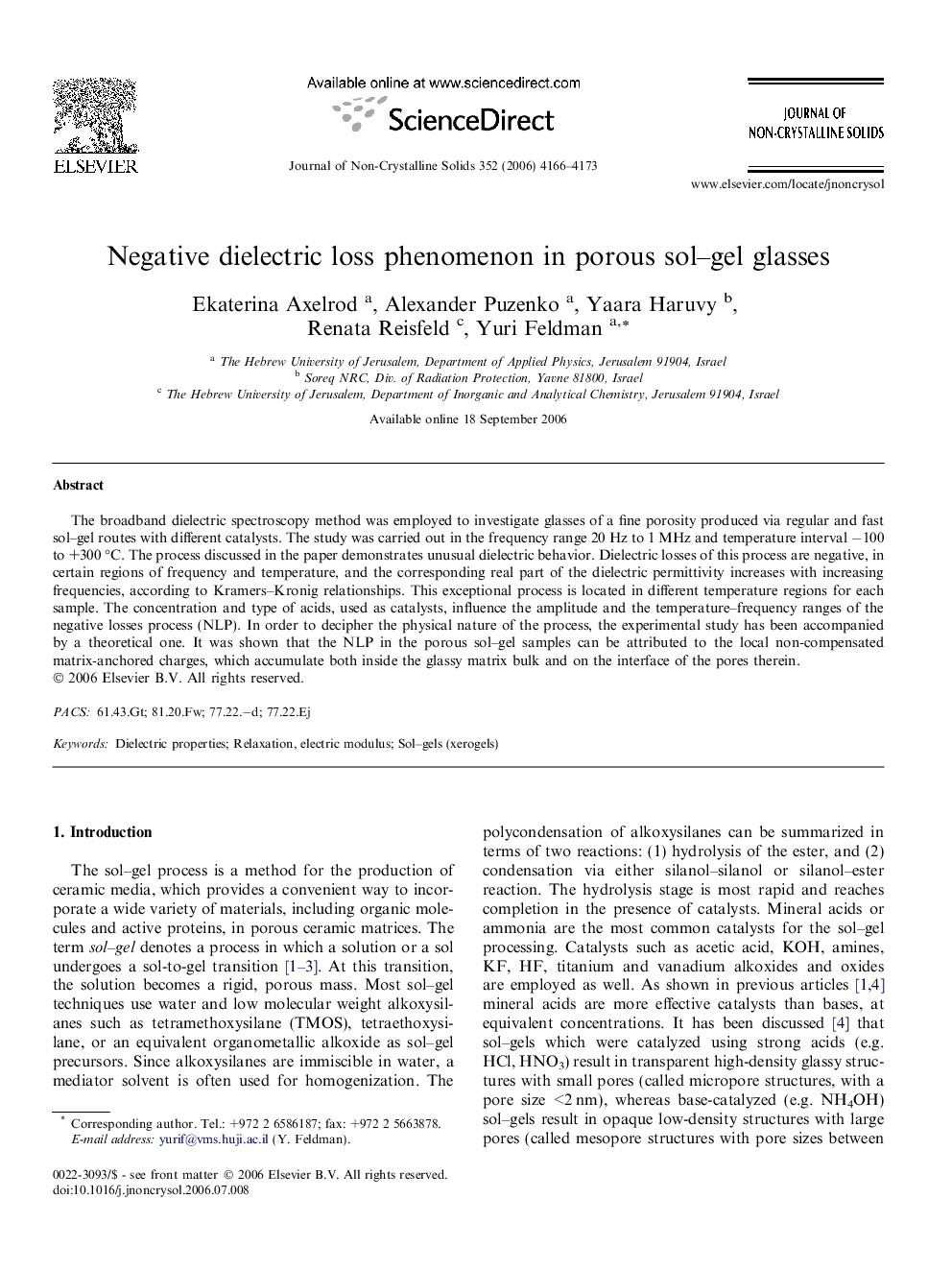| Article ID | Journal | Published Year | Pages | File Type |
|---|---|---|---|---|
| 1485728 | Journal of Non-Crystalline Solids | 2006 | 8 Pages |
The broadband dielectric spectroscopy method was employed to investigate glasses of a fine porosity produced via regular and fast sol–gel routes with different catalysts. The study was carried out in the frequency range 20 Hz to 1 MHz and temperature interval −100 to +300 °C. The process discussed in the paper demonstrates unusual dielectric behavior. Dielectric losses of this process are negative, in certain regions of frequency and temperature, and the corresponding real part of the dielectric permittivity increases with increasing frequencies, according to Kramers–Kronig relationships. This exceptional process is located in different temperature regions for each sample. The concentration and type of acids, used as catalysts, influence the amplitude and the temperature–frequency ranges of the negative losses process (NLP). In order to decipher the physical nature of the process, the experimental study has been accompanied by a theoretical one. It was shown that the NLP in the porous sol–gel samples can be attributed to the local non-compensated matrix-anchored charges, which accumulate both inside the glassy matrix bulk and on the interface of the pores therein.
